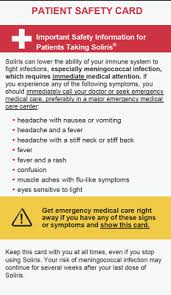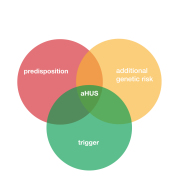Two days ago an article appeared in BLOOD journal which was the result of a comprehensive analysis of data about patients with atypical hemolytic uremic syndrome , or complement mediated atypical hemolytic uremic syndrome or CaHUS patients as authors refer to the disease. ( Getting an idea of the nomenclature drift these days?)
The characteristics and clinical experience of over 300 CaHUS patients studied in this research has been recorded in a UK database maintained by the aHUS expert centre in Newcastle upon Tyne.
Led by Vicky Brocklebank the research covers issues like time taken to respond to eculizumab, the levels residual renal function and prognosis, and chances of relapse on withdrawal of complement inhibitor treatment. With comparisons between genetic and treatment groups.
It is a long but clearly written article with lots of statistical tables and well worth a read for anyone wanting the answers it gives.The article can be read at this LINK. An abstract can be seen below.
Alongside the article there is shorter read critique by a couple of Dutch researchers pointing out the what answers the article does not provide to close the aHUS knowledge gap. No surprises in what they have to say. Closing the aHUS knowledge gap is an incremental and continuous process. 25 years ago the knowledge gap was closed significantly by the discovery of a complement genetic cause of aHUS ( HERE) and look where we are now.
Among the findings of Brocklebank et al research was another non complement genetic causes of aHUS I.e. something called EXOSC3 is unresponsive to eculizumab and HSD11B2 is another cause of TMA.
Closing the CaHUS , whatever it is called, knowledge cap a little more for those patients.

A pictorial abstract of Brocklebank et al ‘s article
Article No. 609


